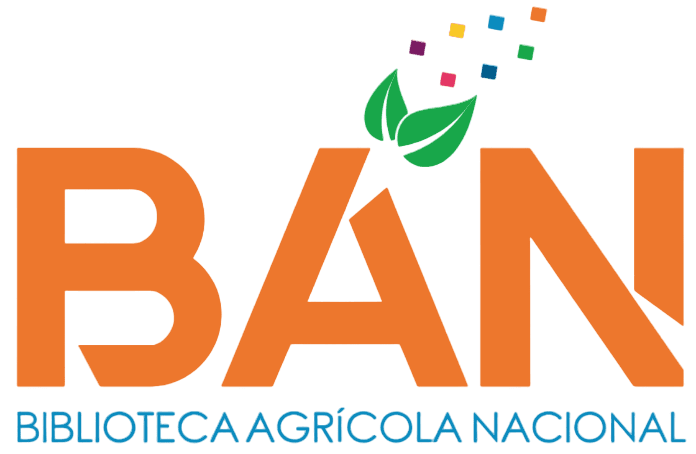Identificación preliminar y comportamiento de Meloidogyne sp. en Zingiber officinale Roscoe en Pichanaqui Chanchamayo Junín
| dc.contributor.advisor | Palomo Herrera, Ángel Alfonso | |
| dc.contributor.author | Chávez Herrera, Inocencio | |
| dc.date.accessioned | 2023-10-27T19:14:45Z | |
| dc.date.available | 2023-10-27T19:14:45Z | |
| dc.date.issued | 2023 | |
| dc.description | Universidad Nacional Agraria La Molina. Facultad de Agronomía. Departamento Académico de Fitopatología | |
| dc.description.abstract | El jengibre peruano tiene un mercado ganado en el exterior. Sin embargo, los problemas fitosanitarios son la principal merma de la producción, siendo los nemátodos del género Meloidogyne un problema de importancia. El objetivo de este trabajo es la identificación morfológica y, el comportamiento del jengibre a diferentes cantidades poblaciones de Meloidogyne spp. El trabajo se realizó bajo condiciones de invernadero en La Molina (maceteros) y en ambiente abierto en Pichanaqui (bolsas), ambos con 2000 cc de sustrato, la parte de identificación morfológica se hizo en el Laboratorio de Nematología de UNALM. Las muestras para la identificación morfológica y el inóculo, se colectaron de campos comerciales de jengibre que presentaban los síntomas característicos del nemátodo, se aislaron 20 hembras y dos machos que se encontraron en la muestra para la identificación mediante el método morfológico. De las hembras resultaron 11 con características de M. exigua (55 por ciento), siete con características de M. incognita (35 por ciento) y dos con características de M. javanica (10 por ciento), así mismo, los dos machos reforzaron a M. incognita. Por otro lado, los tratamientos trabajados fueron 5, 50, 500, 1,000 (huevos / 100 cc de suelo) y un tratamiento testigo sin inóculos, los parámetros evaluados indirectos (altura de planta, peso aéreo, raíz, etc.) y directos (reproducción del nemátodo, eficiencia del hospedante comportamiento de planta), tuvieron diferencias significativas, pero, con marcadas diferencias a nivel de invernadero en comparación de los datos obtenidos de Pichanaqui. Además, según los parámetros evaluados, se estableció que el cultivo de jengibre es un hospedante eficiente para Meloidogyne spp. obteniendo para este trabajo, una pérdida de hasta 80 por ciento de la producción con el mayor tratamiento y, una reducción gradual directa en cuanto a calidad del rizoma con todos los tratamientos inoculados. | |
| dc.description.abstract | Peruvian ginger has gained a market presence abroad. However, phytosanitary issues represent the primary setback in production, with nematodes of the Meloidogyne genus being a significant concern. The study’s objective is the morphological identification and behavior of ginger under different population densities of Meloidogyne spp. The research was conducted under semi-controlled conditions in La Molina (pots) and in open environments in Pichanaqui (bags), both using 2000 cc of substrate. The morphological identification part was carried out in the UNALM Nematology Laboratory. Samples for morphological identification and inoculation were collected from commercial ginger fields displaying characteristic nematode symptoms. Twenty females and two males were isolated from the sample for morphological identification. Of the females, 11 exhibited characteristics of M. exigua (55 percent), seven of M. incognita (35 percent), and two of M. javanica (10 percent). Furthermore, the two males confirmed the presence of M. incognita. On the other hand, the treatments included five different inoculation levels: 5, 50, 500, 1000 (eggs/100 cc of soil), and a control treatment with no inoculation. Significant differences were observed in both indirect parameters (plant height, aerial and root weight, etc.) and direct parameters (nematode reproduction, host efficiency, plant behavior). However, there were marked differences between greenhouse and Pichanaqui data. According to the evaluated parameters, it was established that ginger cultivation is an efficient host for Meloidogyne spp. In this study, a production loss of up to 80 percent was observed with the highest treatment, along with a gradual reduction in rhizome quality with all inoculated treatments. | |
| dc.format | application/pdf | |
| dc.identifier.uri | https://hdl.handle.net/20.500.12996/6029 | |
| dc.language.iso | spa | |
| dc.publisher | Universidad Nacional Agraria La Molina | |
| dc.publisher.country | PE | |
| dc.rights | info:eu-repo/semantics/openAccess | |
| dc.rights.uri | https://creativecommons.org/licenses/by-nc-nd/4.0/ | |
| dc.subject | Zingiber officinale | |
| dc.subject | Jenjibre | |
| dc.subject | Comportamiento | |
| dc.subject | Daños | |
| dc.subject | Desarrollo biológico | |
| dc.subject | Evaluación | |
| dc.subject | Experimentación en laboratorio | |
| dc.subject | Kión | |
| dc.subject | Infestación | |
| dc.subject | Invernaderos | |
| dc.subject | Meloidogyne incognita | |
| dc.subject | Perú | |
| dc.subject | Plagas de plantas | |
| dc.subject | Relaciones huésped patógeno | |
| dc.subject | Síntomas | |
| dc.subject.ocde | https://purl.org/pe-repo/ocde/ford#4.01.07 | |
| dc.title | Identificación preliminar y comportamiento de Meloidogyne sp. en Zingiber officinale Roscoe en Pichanaqui Chanchamayo Junín | |
| dc.type | info:eu-repo/semantics/bachelorThesis | |
| dc.type.version | info:eu-repo/semantics/publishedVersion | |
| renati.advisor.dni | 06769319 | |
| renati.advisor.orcid | https://orcid.org/0000-0003-2208-3620 | |
| renati.author.dni | 42729199 | |
| renati.discipline | 811036 | |
| renati.juror | Julca Otiniano, Alberto Marcial | |
| renati.juror | Apaza Tapia, Walter Eduardo | |
| renati.juror | Aragón Caballero, Liliana María | |
| renati.level | https://purl.org/pe-repo/renati/level#tituloProfesional | |
| renati.type | https://purl.org/pe-repo/renati/type#tesis | |
| thesis.degree.discipline | Agronomía | |
| thesis.degree.grantor | Universidad Nacional Agraria La Molina. Facultad de Agronomía | |
| thesis.degree.name | Ingeniero Agrónomo |
Files
Original bundle
1 - 3 of 3
Loading...
- Name:
- chavez-herrera-inocencio.pdf
- Size:
- 3.13 MB
- Format:
- Adobe Portable Document Format
- Description:
- Texto completo

- Name:
- Informe Originalidad.pdf
- Size:
- 358.29 KB
- Format:
- Adobe Portable Document Format
- Description:
License bundle
1 - 1 of 1

- Name:
- license.txt
- Size:
- 1.63 KB
- Format:
- Item-specific license agreed upon to submission
- Description:

